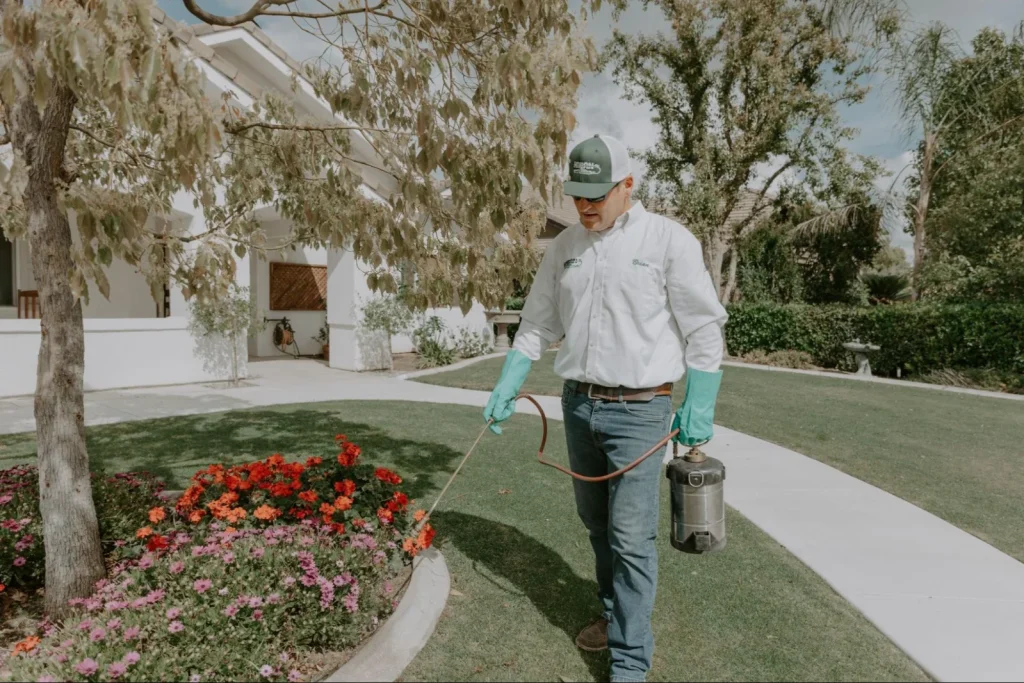Pest Birds
Birds can become pests when they build nests in inconvenient places, such as rooftops or vents. Their droppings can damage property and pose health risks. If birds are causing problems, Killian Pest Control can assist with safe removal strategies.
Make an Appointment
Pest Library
Feral Pigeon
Pigeons hold the dubious title of being the number one pest bird in the country. Domesticated over two thousand years ago, pigeons are unafraid of people and readily adapt to an urban environment. Because their droppings contain an acidic component that is highly corrosive, pigeons can cause a great deal of damage to your property in a short amount of time.
Pigeons are larger and plumper than a Mourning Dove and are tubby birds with small heads and short legs. Their wings are broad but pointed and the tail is wide and rounded. Colors vary, but most birds are bluish gray with two black bands on the wing and a black tip to the tail. Most birds have iridescent throat feathers.

Feral Pigeons are responsible for untold millions of dollars of damage each year in urban areas. The uric acid in their feces is highly corrosive. Also, debris from roosting flocks can build up, backing up gutters and drains thus causing damage to roofs and other structures. Extensive damage to air conditioning units and other roof top machinery is commonplace. There are also other economic costs that can be associated from Pigeons taking up residence such as slip and fall liability and projection of an unclean, dirty company image. Besides physical damage, the bacteria, fungal agents and ectoparasites found in Pigeon droppings sometimes represent a health risk.
House Sparrow
The House Sparrow is the number two urban pest bird. Introduced as a species to North America, the house sparrow quickly spread across the country due to its lack of natural enemies and its adaptive traits. Its ability to nest in urban structures, eat urban scraps and a large breeding capacity are some of these adaptive traits.
Male House Sparrow have black throats and chest patches, light cheeks and brown nape. The female has a plain brownish chest and dull eye-stripe.

House Sparrows are often a nuisance in urban areas like manufacturing and food processing plants. Gutters and drainage pipes clogged with sparrow nests can backup and cause extensive water damage and fires have been attributed to electrical shorts caused by machinery housing sparrow nests. Lastly, feces buildup can lead to structural damage from the uric acid in droppings, plus the bacteria, fungal agents and parasites in the feces also pose a health risk.
Starling
Like the house sparrow, the starling was introduced from Europe in the 19th century. It did not spread as fast and only reached the western coast within the last few decades. Starlings are well adapted to urban life which offer it an abundance of food and nesting sites. It is a muscular bird about eight inches long with long wings and a short squared tail. Starlings are very aggressive and will drive native birds out of their territory, much to the dismay of local bird watchers. Starlings are well noted for their flocking habits. They often gather in the tens of thousands, creating a nuisance when roosting in populated areas.
The starling is a dark chunky, muscular bird. It is distinguished from other blackbirds by its short tail and its longer, slender bill. Starling plumage varies depending on the season. In winter, the bird displays a highly speckled iridescent coat and a dark bill. In summer, the bird’s coat dulls and has far fewer speckles.

Starlings rank just behind pigeons and sparrows as an urban bird pest. Starlings can be a nuisance in both urban and rural areas due to their nesting, eating and living habits. When the bird is in its flocking phase, thousands of starlings often overwhelm buildings and trees. Large scale buildup of feces from these flocks can lead to structural damage. The uric acid in the feces can corrode stone, metal and masonry. Gutters and drainage pipes clogged with starling nests often backup, causing extensive water damage. The bacteria, fungal agents and parasites in the feces also pose a health risk.
